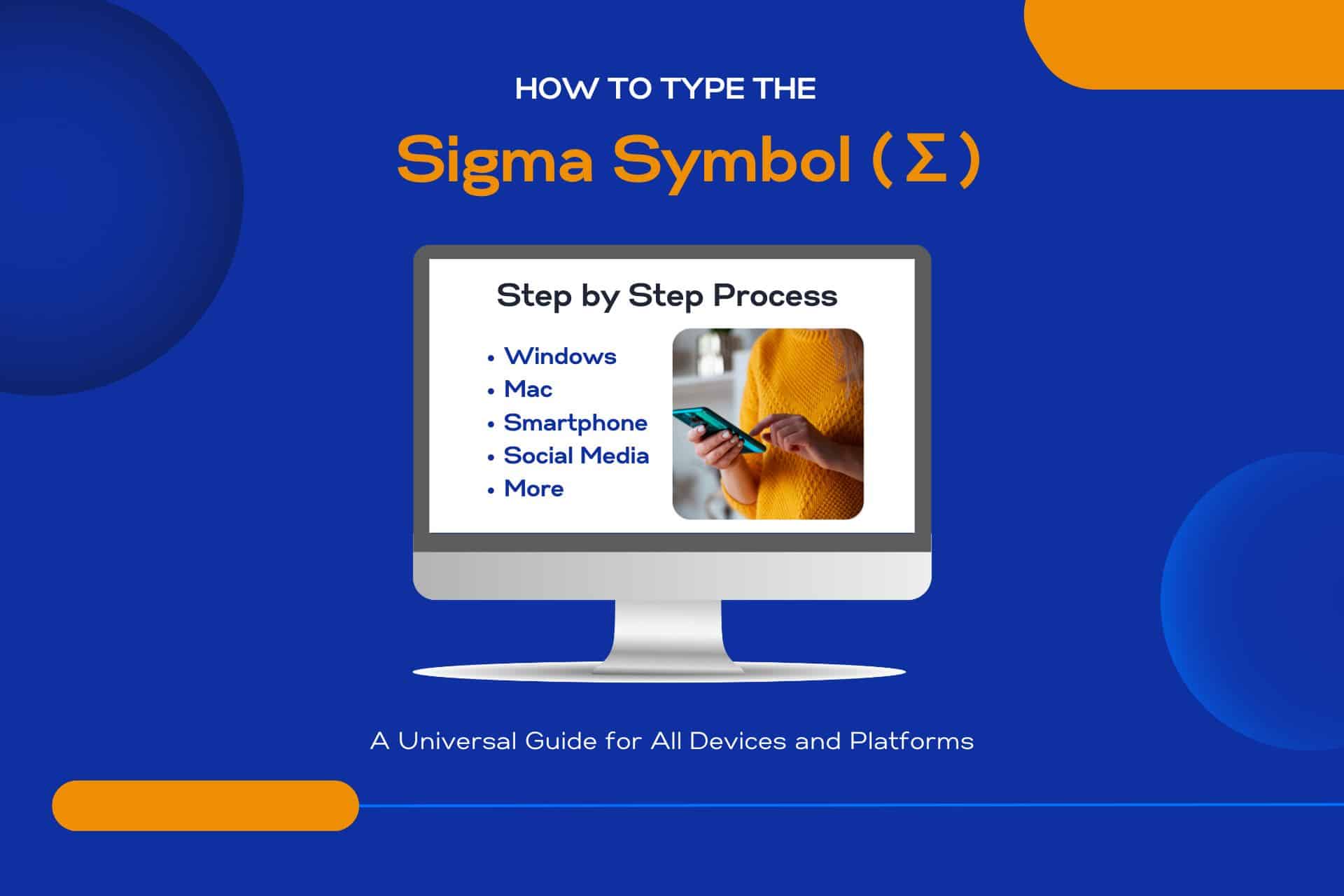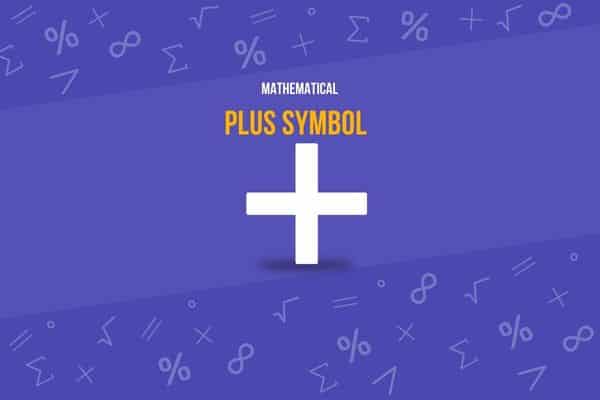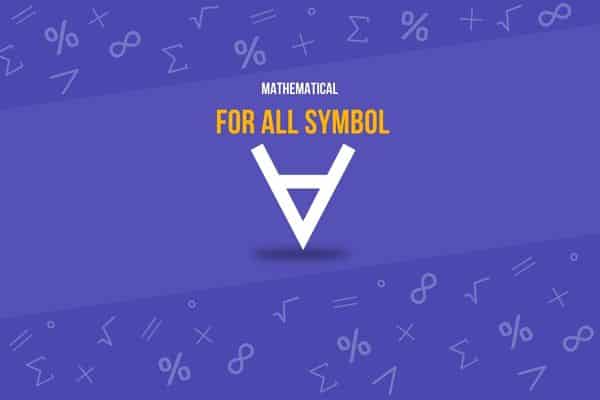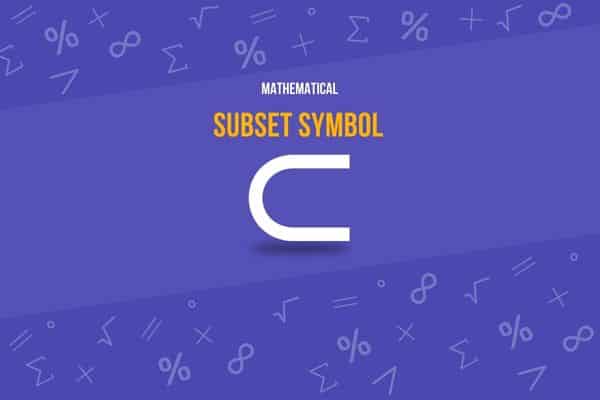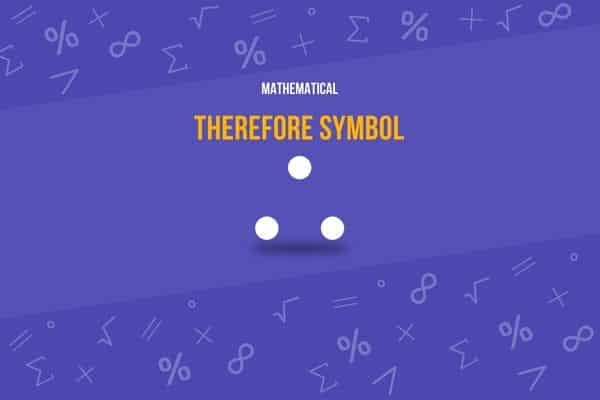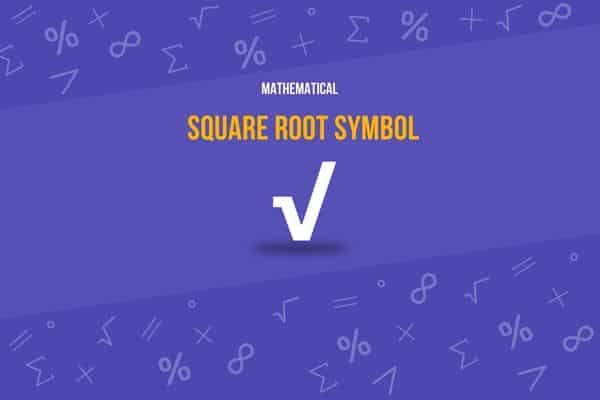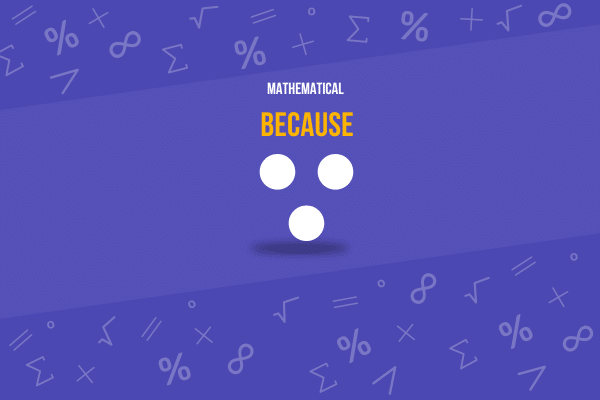What is the Sigma Symbol?
Imagine standing in front of a vast mathematical landscape filled with symbols containing worlds of meaning. Just over the horizon, there’s a special one called the Sigma symbol (Σ), known for its mighty role in mathematics.
It might seem intimidating, but don’t fret; a thrilling adventure awaits you.
Are you ready to unlock its secrets and see mathematics in a new light? As you journey through this post, we’ll unravel the unique ways in which the Sigma symbol is used, and by the end, you’ll find yourself equipped with an exciting new mathematical symbol.
Let’s get started!
Fast Facts
∑
Sigma Symbol
Here’s a detailed table providing information about the Sigma symbol (∑):
| Attribute | Detail |
|---|---|
| Symbol Name | Greek Capital Letter Sigma |
| Unicode | U+2211 |
| Image | ∑ |
| Brief Description | Used primarily to denote summation in mathematical expressions. |
| Unicode Version and Date of this Version | Unicode 1.1, released in June 1993 |
| Unicode Block Name | Mathematical Operators |
| Plane | Basic Multilingual Plane |
| Script | Common |
| Category | Symbol, Math |
| Bidirectional Class | Other Neutrals (ON) |
| Combining Class | 0 |
| Character is Mirrored | No |
| HTML Entity | ∑ or ∑ or ∑ |
| CSS | \2211 |
| UTF-8 Encoding | E2 88 91 |
| UTF-16 Encoding | 22 11 |
| UTF-32 Encoding | 00 00 22 11 |
Here’s What You Will Find
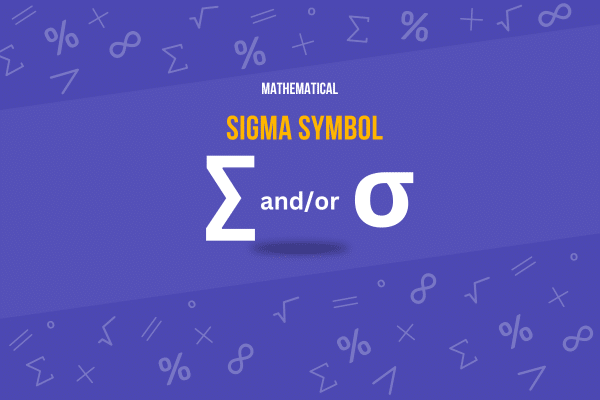
Sigma Symbol
In mathematics and statistics, the Sigma symbol plays a dual role. The uppercase Sigma (Σ) is a symbol you often encounter in summation notation. It signifies the sum of a sequence of terms. For example, Σ from i=1 to n of i indicates the sum of all integers from 1 to n.
On the other hand, the lowercase sigma (σ) primarily dances on the statistical stage. It commonly represents the standard deviation of a population in statistics, providing a measure of how much individual data points in a population differ from the mean.
Despite their different roles, both versions of Sigma are integral to their respective fields, encapsulating complex concepts in a single, elegant symbol.
Other Names
The Sigma symbol doesn’t just go by one name but several, each reflecting its unique functions and applications. The uppercase Sigma, Σ, is often called the “summation symbol” because it represents the sum of a series of numbers in mathematics. It’s like the mathematical equivalent of saying, “Add all these up!”
On the other hand, the lowercase sigma σ may be called the “standard deviation symbol” in statistics, providing a measure of dispersion or variation in a data set.
It’s also known as the “stress symbol” in physics, representing the force a material can withstand. These alternate names glimpse the Sigma symbol’s versatile roles across various disciplines.
Sigma Symbol Meaning
The Sigma symbol (Σ) is a mathematical symbol used primarily to denote summation in mathematics. Representing the sum of a series of terms, it is often used in expressions like ( \sum_{n=1}^{N} a_n ), which means the sum of ( a_n ) from ( n = 1 ) to ( N ). This symbol is crucial in various fields of mathematics, including algebra and calculus, where it simplifies the notation for adding sequences of numbers, functions, or series.
The Sigma symbol carries a wealth of meaning, and its interpretation changes depending on the field in which it’s applied. Starting with the uppercase Sigma (Σ), this version is primarily recognized as the summation symbol in mathematics.
When you see Σ in a mathematical equation, you should sum up a series of numbers. The numbers to be summed are usually presented as a sequence, and the limits of the sequence (start and end points) are conventionally written above and below the Sigma. The expression to the right of the symbol specifies what should be summed.
Shifting to the lowercase sigma (σ), we step into statistics. The standard deviation stands for the mean, a key measure indicating how spread out numbers in a data set are. When σ is small, it means the data points are close to the mean, and when σ is large, the data points are spread out over a wider range.
In physics and engineering, lowercase sigma can represent various other concepts, such as stress in materials, surface charge density, or Stefan-Boltzmann constant, depending on the context.
However, it’s important to note that these meanings are not fixed, and the Sigma symbol’s interpretation can vary based on the specific scientific or mathematical context in which it’s being used.
In essence, the Sigma symbol is a flexible tool that encapsulates different complex concepts within its simple form.
Sigma Symbol Unicode
The Unicode Standard is a universal character encoding scheme that allows us to represent and manipulate various characters from different writing systems across the globe. It’s like a digital Rosetta Stone, providing a unique number for every character, irrespective of the platform, program, or language.
This innovative system allows you to use virtually any character from any linguistic tradition, even mathematical symbols like our friend Sigma. In the Unicode system, the uppercase Sigma (Σ) has the code U+03A3, while the lowercase sigma (σ) uses U+03C3.
However, there’s a special variant of the lowercase sigma (ς), used only as a final form in Greek text, and it is represented as U+03C2 in Unicode. Now isn’t that something?
This complex system ensures that no matter where or what computer we use, Σ and σ are always a Unicode away!
Sigma Symbol Uses
In its uppercase and lowercase forms, the Sigma symbol performs various functions across different fields, painting a vibrant picture of its versatility. The uppercase Sigma (Σ) is a critical character in mathematics, most commonly seen in summation notation. It represents the sum of a sequence or series of numbers—a shorthand for “add all these numbers together.”
The Sigma symbol (Σ) is widely used in mathematics and disciplines for several important functions. Here are some of the key uses of the Sigma symbol:
- Summation Notation: Σ is most commonly used to represent the sum of a sequence of numbers, a series, or terms within an expression, such as ( \sum_{i=1}^{n} i ) which calculates the sum of all integers from 1 to n.
- Statistical Mathematics: In statistics, the Sigma symbol denotes the sum of a set of values, which is fundamental in calculations like the mean, standard deviation, and variance.
- Signal Processing: Σ appears in digital signal processing to represent the sum of signals or series expansions.
- Physics and Engineering: In physics, the Sigma symbol can represent summation in various contexts, such as total force or energy sums in a system.
- Computer Science: It is used in algorithms and programming to express summative loops or recursive functions.
- Upper-case Sigma in Mathematics: Apart from summation, upper-case Sigma (Σ) also sometimes represents the covariance matrix in multivariate statistics or the Pauli matrices in quantum mechanics.
- Lower-case Sigma in Science: While not a summation, the lower-case sigma (σ) symbolizes standard deviation in statistics, electrical conductivity in physics, and stress in engineering.
These applications highlight the versatility and crucial role of the Sigma symbol in facilitating complex calculations and theoretical formulations across various scientific fields.
Think of the sigma symbol as a mathematical conductor orchestrating a symphony of numbers to play in harmony. Shifting our focus to the lowercase sigma (σ), we enter statistics, where σ signifies the standard deviation of a population, a measure of data variability.
But it doesn’t stop there. In physics, σ can represent the surface charge density or the stress on a material. In fluid dynamics, it symbolizes surface tension. From mathematics to statistics, physics to engineering, the Sigma symbol is a universal connector, embodying different yet fundamentally related concepts.
Sigma Symbol Examples
Let’s look at an example featuring the uppercase Sigma symbol (Σ), used in summation notation. Suppose we want to find the sum of the first five positive integers. In mathematical notation, we would use the uppercase Sigma symbol to express this as follows: Σ (from i=1 to 5) of I.
The Sigma symbol (Σ) is a versatile mathematical symbol with numerous applications across different fields. Here are some practical examples of how the Sigma symbol is used:
- Mathematical Summation: In mathematics, Σ indicates the summation of a series or sequences. For example, the expression ( \sum_{i=1}^{10} i ) calculates the sum of all integers from 1 to 10.
- Statistical Data Analysis: In statistics, Σ helps calculate the mean of a dataset by summing all values. For instance, the mean ( \mu ) is found using ( \mu = \frac{1}{N} \sum_{i=1}^{N} x_i ), where ( x_i ) are the data points and ( N ) is the total number of points.
- Physics: In physics, the total force acting on a body might be expressed using Σ, such as ( F_{\text{total}} = \sum_{i=1}^{n} F_i ), where ( F_i ) represents individual forces applied.
- Engineering: The symbol is often used in structural engineering to denote the resultant force or stress over an area, e.g., ( \sigma = \sum_{i=1}^{n} \sigma_i ).
- Computer Algorithms: In programming and algorithms, Σ represents the sum of elements or results within a loop or recursive function, improving clarity and efficiency in code documentation.
These examples demonstrate the widespread utility of the Sigma symbol in simplifying and representing summative processes in mathematical expressions and scientific calculations.
Why is the Sigma Symbol Important?
The Sigma symbol is immensely important in mathematics and beyond as a powerful tool for simplifying complex mathematical operations and concepts. Its uppercase version (Σ) elegantly conveys the idea of summation, allowing us to express the addition of long sequences of numbers easily and clearly.
Without it, mathematicians would have to write out extensive series term by term, making the calculation and comprehension process cumbersome and less efficient. In its lowercase form (σ), the Sigma symbol is equally crucial in statistics, representing standard deviation, a fundamental measure of data dispersion.
The symbol is also used in various branches of physics and engineering, from denoting stress on materials to representing surface charge density. In essence, the Sigma symbol facilitates the communication of intricate ideas, underpinning mathematical notation and reinforcing the precision and efficiency that are hallmarks of the discipline. Its use is a testament to the beauty and elegance of symbolic language in the world of numbers.
Sigma Symbol History
The Sigma symbol’s introduction as a symbol for summation is credited to the Swiss mathematician Leonhard Euler in the 18th century. Euler, known for his works in various areas of mathematics, chose the Greek letter due to its initial in the Greek word “súmma,” meaning “total” or “sum.”
The lowercase sigma (σ) came to represent standard deviation in statistics during the 20th century. The journey of the Sigma symbol reflects the development of human knowledge, a simple letter evolving to become a fundamental part of the intricate language of mathematics and science.
Sigma Symbol Origin
The Sigma symbol has a history as rich and intriguing as its functions. Its roots go back to the Greek alphabet, where “sigma” is the 18th letter. The word “sigma” may have been derived from the Phoenician letter “šīn,” meaning tooth.
The Greek alphabet, including sigma, was adopted and adapted from the Phoenician alphabet during the 8th century BCE. It wasn’t until centuries later, with the development and formalization of mathematical notation, that the Sigma symbol started to be used in the field of mathematics
Evolution of the Sigma Symbol
The evolution of the Sigma symbol is a tale of adaptation and expansion in utility. Originally, Sigma was simply a letter in the Greek alphabet, but its metamorphosis over centuries has made it a vital part of the mathematical and scientific lexicon.
In the early Greek alphabet, it was used as a standard letter with no numerical or mathematical implications. However, with Leonhard Euler’s innovation in the 18th century, the uppercase Sigma (Σ) began to symbolize the sum of a series of numbers in mathematical notation.
This marked a significant shift from its traditional alphabetic role. In the 20th century, the lowercase sigma (σ) further broadened the symbol’s usage by representing standard deviation in statistics. Moreover, it also found a place in various physics and engineering equations.
Through all these changes, the Sigma symbol embodies the fluidity and evolution of human knowledge, continually transforming to meet the needs of different disciplines.
Sigma Symbol In Everyday Life
Beyond its mathematical and statistical implications, the Sigma symbol can offer a unique lens through which to view our daily lives. Just as the uppercase Sigma (Σ) signifies the sum of a series of numbers, it can remind us that our lives are a summation of countless moments, decisions, and experiences.
This perspective encourages an appreciation of the smaller moments, understanding that each contributes to the totality of our existence.
Incorporating this Sigma principle into your daily routine might involve adopting a practice of mindfulness, where each action, thought, and experience is acknowledged as a vital part of the sum of your day. From enjoying a peaceful morning coffee to completing a challenging project, every moment contributes to your personal ‘sum’ for the day.
The lowercase sigma (σ), which represents standard deviation, reminds us of the variations and fluctuations in our daily routines. Life is not always uniform, and acknowledging this variability can help us embrace change and unpredictability. It can also encourage us to be flexible and adaptive, enhancing our resilience and well-being.
Last Thoughts
In exploring the Sigma symbol, we’ve journeyed through centuries, crossed from mathematics to statistics, and seen its influence ripple into various facets of popular culture. The Sigma symbol’s story is a testament to symbols‘ fascinating and enduring power in our lives.
But remember, this is just one symbol among countless others, each with its unique story and significance. Why not continue this exciting exploration? Dive into the tales of other symbols and signs, uncovering the layers of meaning they carry.
If the Sigma symbol has sparked a flame, consider browsing related merchandise—from fashion to home décor, stationery to tech accessories. You’ll have a cool design and a meaningful conversation starter.
So, keep exploring, keep learning, and let the world of symbols continue to enrich your understanding of the world around you.
Before You Go
Embrace your curiosity and let it guide you. A whole universe of other symbols and signs is waiting to unveil their captivating stories and deepen your understanding—your next enlightening discovery could be just a click away!
More on the Sigma Symbol
How to Type the Sigma Symbol (∑): A Universal Guide for All Devices and Platforms [Step-by-Step Process]
Are you curious about how to type the sigma symbol (∑)? Discover the efficiency of using symbols like the Sigma (∑) across all your devices and platforms for calculations and presentations. Continue reading to learn …
Check it Out!
